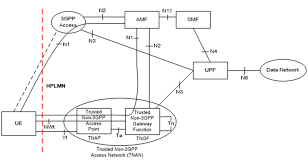What is WBMP? An Overview of the Wireless Application Bitmap Protocol
telcomatraining.com – In the evolving world of mobile technology, protocols and data formats play a crucial role in enhancing communication and user experience. One such protocol, often underappreciated but highly effective, is the Wireless Application Bitmap Protocol (WBMP). This article will provide an in-depth look at WBMP, its significance, and how it fits into the broader context of mobile and wireless communication.
Understanding WBMP
The Wireless Application Bitmap Protocol (WBMP) is a data format and protocol primarily used in mobile communication systems to enable the transmission of bitmap images. Developed in the early 2000s, WBMP was designed for use in Wireless Application Protocol (WAP)-enabled devices, such as early mobile phones, which had limited display capabilities and constrained bandwidth.
WBMP is specifically intended to work within the constraints of wireless networks, allowing devices to display bitmap images even with slower internet speeds and small screens. Unlike other more common image formats like JPEG or PNG, WBMP was optimized for mobile devices and focused on offering a lightweight image format that could be efficiently transmitted over WAP networks.
How WBMP Works
WBMP images are designed to be monochrome (black and white) bitmaps, making them ideal for early mobile phones that had low-resolution screens and limited graphical capabilities. The simplicity of WBMP images meant they could be compressed to a very small size, ensuring faster transmission times and reducing the strain on the device’s processing power.
WBMP operates by encoding image data in a binary format, with each bit representing a single pixel on the screen. A “1” could represent a black pixel, while a “0” might represent a white pixel. This simplicity made WBMP highly efficient for transmitting images on devices with limited hardware.
Key Features of WBMP
- Monochrome Images: WBMP images are black and white, which limits the color depth but significantly reduces the image size. This compression allows images to be sent more quickly over slow wireless connections.
- Optimized for WAP: WBMP was specifically designed to work with the Wireless Application Protocol, making it an ideal choice for early mobile internet applications and services. WAP is a standard that enables mobile devices to access internet services, and WBMP was intended to make image display possible on such devices.
- Lightweight Format: Given its minimalistic design, WBMP files are much smaller than traditional image formats, which makes them ideal for the constrained environments of early mobile phones and limited network speeds.
Why WBMP Was Important
In the early days of mobile phones, graphical capabilities were minimal, and internet access was often limited to basic browsing. The development of WBMP allowed users to access images, even in monochrome, while browsing the mobile web. This was a crucial step in making mobile internet browsing more engaging and interactive.
At a time when smartphones were not as ubiquitous as they are now, and feature phones dominated the market, WBMP became a vital tool for delivering images to users without overloading the network or slowing down mobile applications. It was an essential component of mobile multimedia and content delivery.
WBMP in Modern Context
While WBMP was a significant protocol in the early days of mobile technology, its use has greatly diminished in the current mobile ecosystem. With the advent of more advanced mobile operating systems, faster networks, and larger screens, modern smartphones and devices are capable of displaying a wide range of images in full color, including formats like PNG, JPEG, and GIF.
However, WBMP still holds historical importance in the development of mobile technology and serves as a reminder of how far mobile communication protocols have come. Additionally, WBMP-like protocols might still be used in some highly specialized use cases, especially in low-bandwidth or constrained environments.
Conclusion
The Wireless Application Bitmap Protocol (WBMP) was an innovative solution for its time, designed to deliver simple monochrome images on early mobile devices over wireless networks. Its lightweight, efficient design made it a vital component of the early mobile web, allowing mobile users to access images and graphics even on devices with limited resources.
Though WBMP has largely been replaced by more advanced image formats and protocols in today’s mobile devices, it played an important role in the evolution of mobile communications and contributed to the development of modern mobile internet technologies. By understanding the history and significance of WBMP, we can better appreciate the advancements that continue to shape the mobile landscape.







